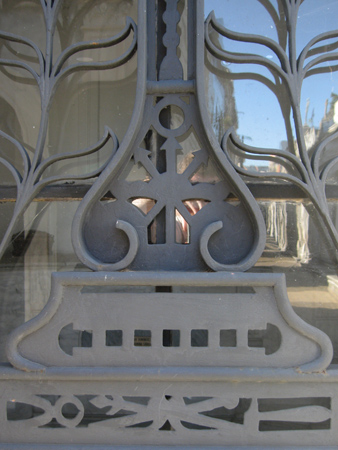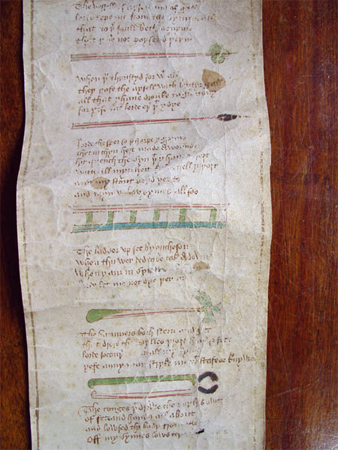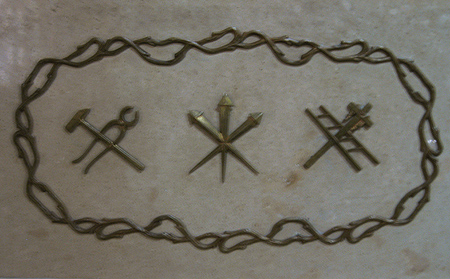Perhaps it’s only a fad or maybe the need to believe in something more than the obvious. Whatever the reason, Masonic madness seems to have taken over cemetery research in Buenos Aires. Every symbol found on tombs is automatically attributed to the Masonic order. For example, a page added to the city government’s official website explains much of the symbolism already mentioned in this blog as if it all had Masonic origins. Impossible.
Without question, several tombs display obvious Masonic imagery (like the Corona family or Pedro Benoit, among many others), & the Order was extremely popular in Argentina. But that fact alone does not give researchers the right to discard alternative meanings.
The door below—several copies of which can be found in Recoleta Cemetery—contains a lot of symbolism when examined carefully:

Three nails refer to the crucifixion & can be found on the mosaic floor of the Cathedral in Buenos Aires: one nail for each hand/wrist & one for both feet. But beneath that obvious Christian symbol, there are many tools… a ladder, pliers, a hammer & even a spear. The most common explanation is that these are Masonic symbols, but actually they have been used to describe the Passion of Christ for several centuries. An English text from the 1300’s shows them all:

The spear was used to confirm that Christ had died (some claim that the spear actually killed him), followers used a ladder to bring the body down & pliers were needed to remove the nails. Symbolic explanations are often that simple. A more recent example of the same imagery can be found in the Iglesia de la Piedad in Buenos Aires:

In a country like Argentina which was more Catholic than Masonic, it’s always safer to assume a religious explanation for cemetery symbols. No need for Masonic madness.
Be First to Comment